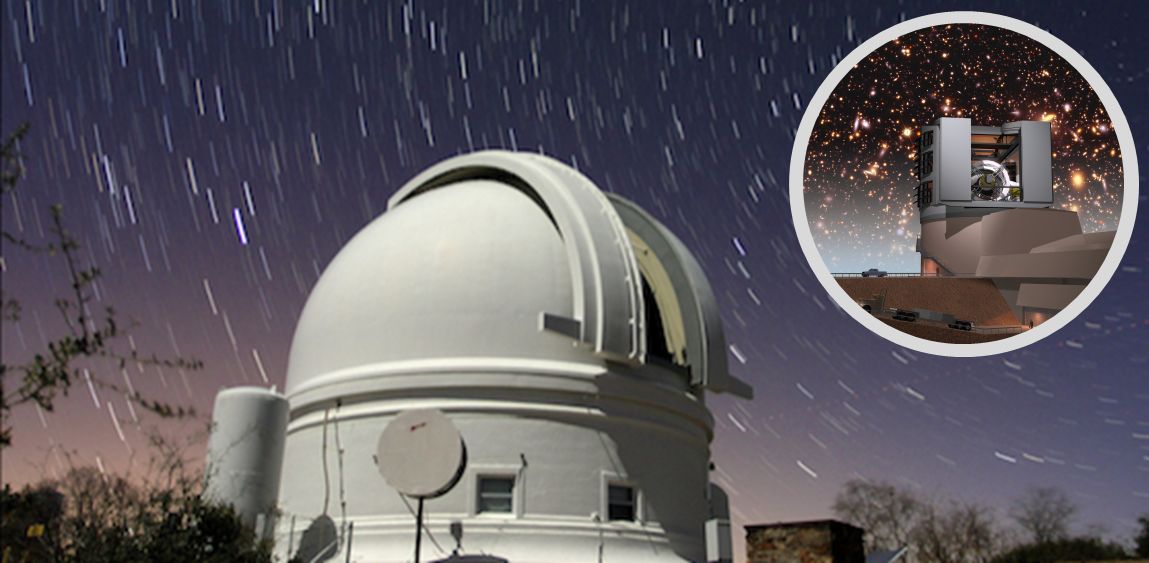ZTF News
Home / ZTF News
ZTF granted funding to work in tandem with the Vera Rubin Observatory
Oct 3, 2024 | News

The National Science Foundation has granted an additional USD 1.6 million to the Zwicky Transient Facility partnership to continue scientific operations in 2025 and 2026. This extension will ensure that both ZTF and the upcoming Vera Rubin Observatory can observe the dynamic sky simultaneously, enabling astronomers to address many novel and long-standing scientific questions.
“This is fantastic news for the global time-domain astronomy community,” says Mansi Kasliwal, an astronomy professor at Caltech and the principal investigator of the successful NSF proposal.
“ZTF has been the behemoth for transient and time-domain science in the last 6 years, while the Vera Rubin Observatory was being constructed. For example, we have produced a live alert stream that facilitated preparations for community event brokers. As Vera Rubin begins operations in 2025, we are entering a new era for time-domain science and I am grateful that the NSF will ensure operational overlap between these two observatories. The benefits, both scientific and technological are significant,” adds Kasliwal.
These benefits mostly come from the combination of the high cadence ZTF data with the deeper, more sensitive observations of Vera Rubin and span across a vast number of scientific areas including supernovae studies, cosmology, stellar and solar system science, multi-messenger astrophysics, and more.
The period of common observations should deliver a unique dataset of lightcurves with a high-cadence peak (ZTF) and deep multi-color data (Rubin) both before and after the explosion. Mining this dataset can help astronomers directly address the physics of why supernovae explode and discover fast and young transients that are inaccessible to ZTF or Rubin alone.
Joint operations will also greatly expand the samples of rare transients by providing the necessary machine-learning training dataset with data from both observatories. Rubin is more sensitive to detecting such extreme events while ZTF already has algorithms to identify these rare transients reliably. “Together, the science effect is not additive but multiplicative,” says Matthew Graham, a research professor at Caltech who will co-lead ZTF in the next two years with Prof. Kasliwal.
“Rubin is expected to discover more of everything in comparison to ZTF. But its little brother ZTF is fast, and nimble, and has been out there in the cosmic neighborhood for a while. So there is great synergy in walking together,” adds Graham.
Several new partners are joining the ZTF collaboration. The group of assistant professor Illaria Caiazzo at the ISTA, Vienna will study variable white dwarfs and compact binaries. Igor Andreoni, an assistant professor at UNC Chapel Hill is interested in multi-messenger sources, tidal disruption events, and the fastest transients.
The other continuing partners in ZTF are Caltech IPAC, University of Maryland, UC Berkeley, Drexel University, Cornell University and the University of Wisconsin, Milwaukee.
“We have an excellent group of scientific collaborators and young students to take full advantage of ZTF and Vera Rubin running alongside. NSF has also funded us to develop open and collaborative software infrastructure to deliver maximum science from the massive datasets of both facilities and develop an additional broker for the community in the LSST era. What a fantastic time to be a time-domain astronomer,” says Kasliwal.
Contacts
Mansi Kasliwal
Professor of Astronomy
Caltech
mansi [at] astro.caltech.edu
Matthew Graham
Research Professor of Astronomy
Caltech
mjg [at] caltech.edu
Ivona Kostadinova
ZTF Program Coordinator
Caltech
ivonata [at] caltech.edu
